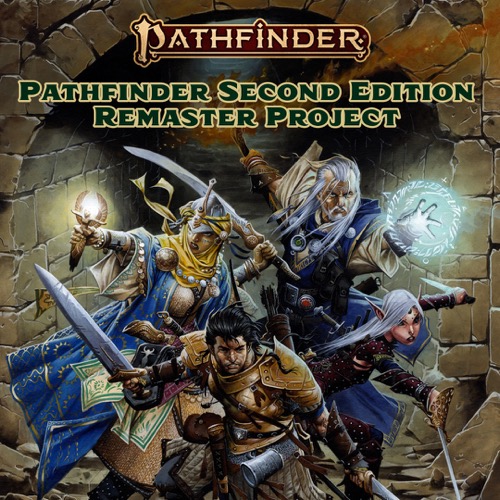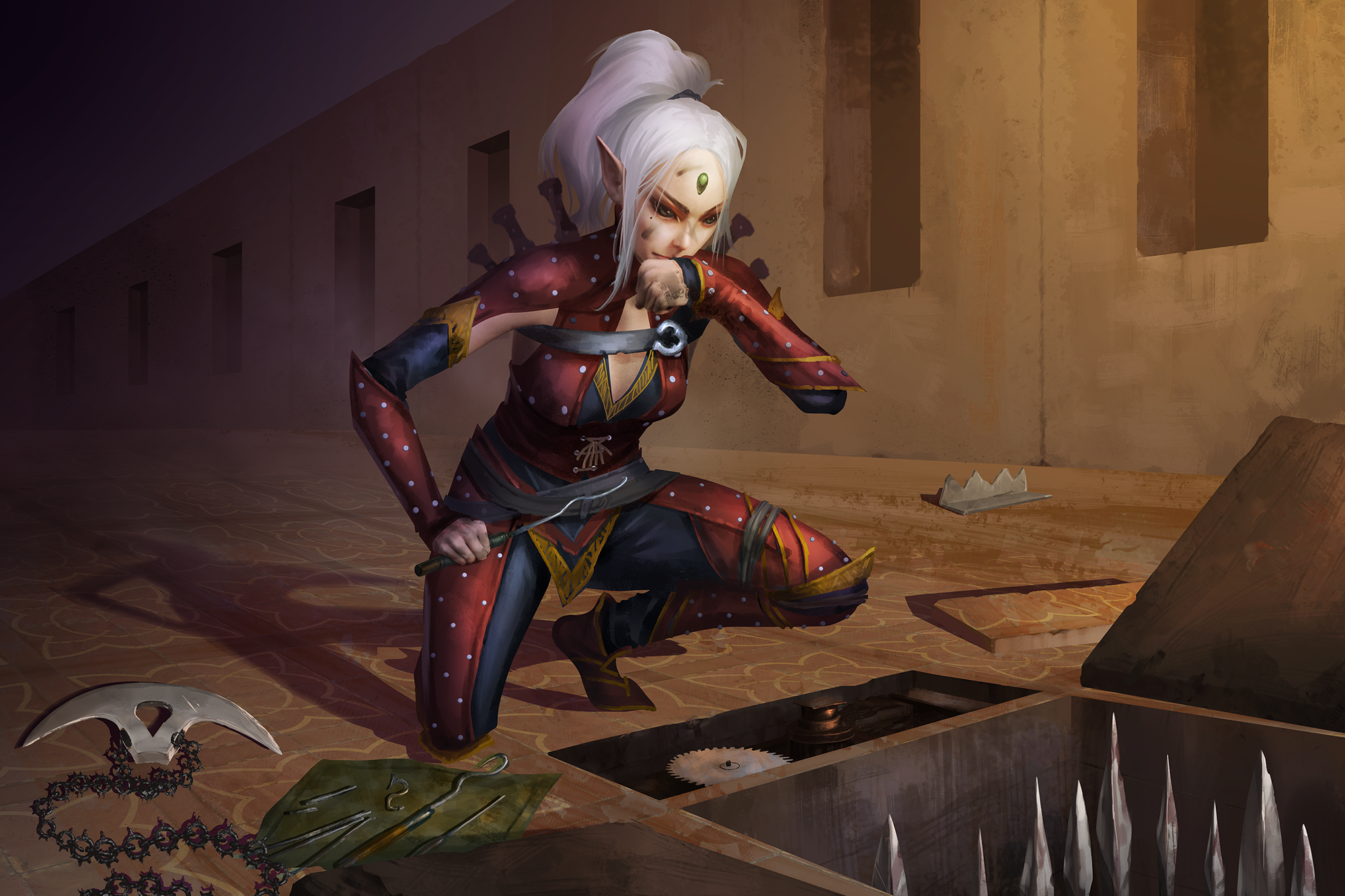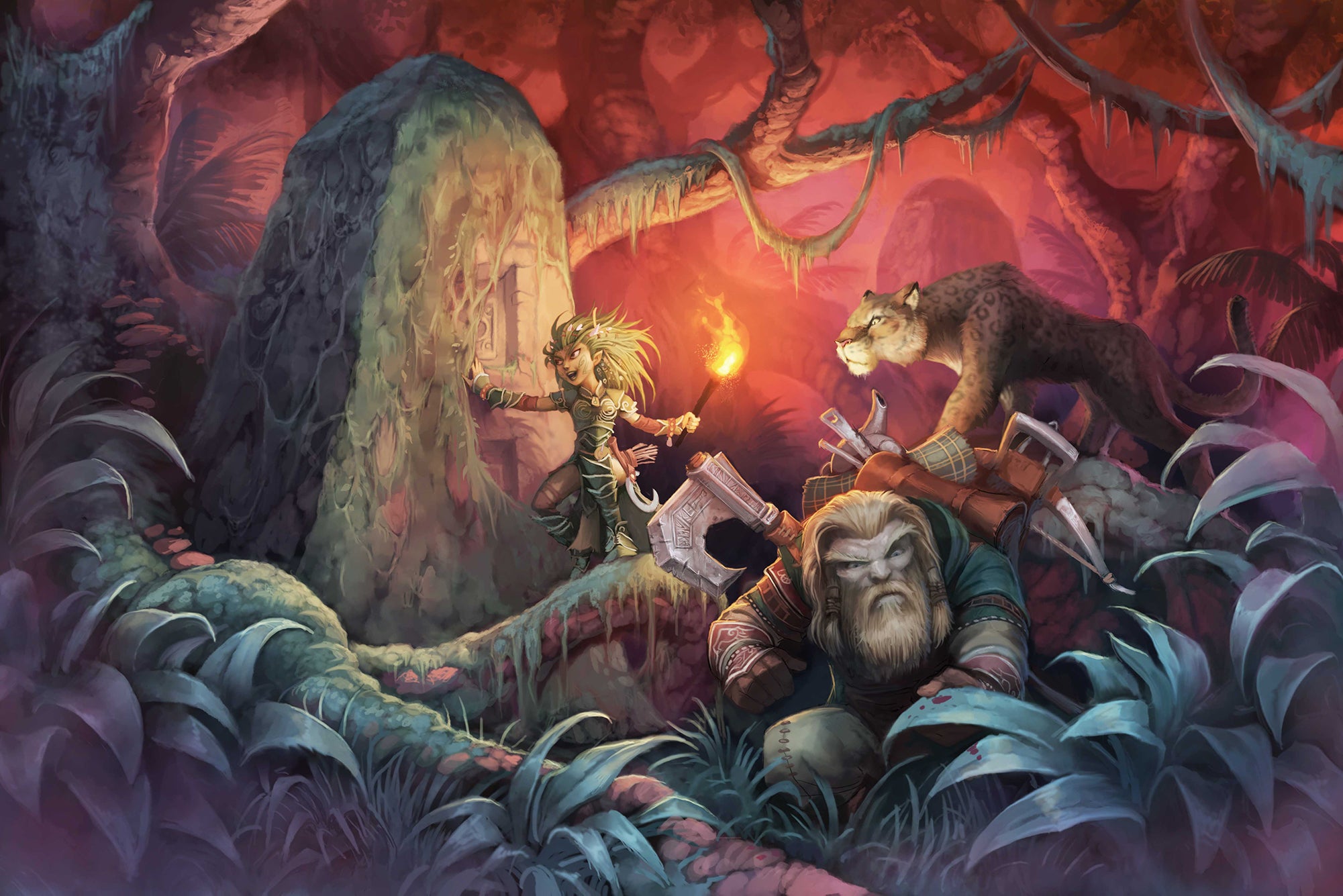“Exploration mode is the connective tissue of your adventure or quest—everything that happens as the characters move between encounters. It could be looking for a rare book in a library, trailblazing through a spooky forest, fortifying a castle before a monster attack, or canvassing the city for a missing person.” – Pathfinder GM Core
Last month’s blog touched on encounter mode, the highest-stakes mode of play in Pathfinder Second Edition. Today, we’re slowing down a bit to talk about exploration mode, which is more free-form and presents unique challenges to player characters.
Exploration mode is a low-to-moderate-risk way to engage with the environment and encourages players to learn about and interact with their surroundings. Rather than measuring time in seconds and rounds, exploration mode uses 10-minute intervals as the smallest unit of measurement, with longer activities such as traveling between locations measured in hours or days.
Gameplay will often transition between exploration mode and encounter mode, with activities in exploration mode leading to encounters—such as stumbling across a den of giant rats while exploring underground tunnels. When transitioning back into exploration mode from an encounter or downtime, players can choose an exploration activity to be pursuing, such as avoiding notice, investigating, or sustaining a spell or effect. These are only examples, and players may also use any other actions or reactions they have that fit the situation.
Pathfinder GM Core provides the following list of guidelines for game masters to consider when running scenes in exploration mode:
- Evoke the setting with vivid sensory details.
- Shift the passage of time to emphasize tension and uncertainty, and speed past uneventful intervals.
- Get players to add details by asking for their reactions.
- Present small-scale mysteries to intrigue players and spur investigation.
- When rolls are needed, look for ways to move the action forward, or add interesting wrinkles on a failure.
- Plan effective transitions to encounters.
A key part of exploration mode is creating engaging environments and situations for characters to explore. Pathfinder GM Core includes a table of environmental details for a variety of different settings and biomes—with sight, sound, smell, texture, and weather details for each. If players are exploring an area with some amount of risk, changing hazards, traps, and potential encounters to match these areas’ themes and sensory descriptions increases immersion at the table.
All of the above and much more are possible in exploration mode—find more details on running exploration mode in Pathfinder GM Core, and more details of exploration activities for characters in Pathfinder Player Core, available now on paizo.com and at your friendly local game store.
Experience the World in Exploration Mode
Tuesday, November 21, 2023













